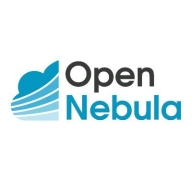

IBM Turbonomic and OpenNebula compete in the cloud management and optimization software category. IBM Turbonomic seems to have the upper hand due to its strong automation and optimization features.
Features: IBM Turbonomic is notable for its automation and optimization capabilities, particularly in capacity management, forecasting, and real-time resource allocation. OpenNebula is recognized for its user-friendly interface, deployment flexibility, and a robust API that supports customization.
Room for Improvement: IBM Turbonomic could benefit from a more intuitive interface and enhanced reporting features. Users of OpenNebula express a need for better-organized documentation, advanced cloud features, and improved template management.
Ease of Deployment and Customer Service: IBM Turbonomic supports both on-premises and hybrid cloud environments, with high customer service ratings. OpenNebula offers flexibility for private and public cloud deployments and provides excellent community support.
Pricing and ROI: IBM Turbonomic is cost-effective, often yielding significant operational savings. OpenNebula's open-source model offers substantial cost benefits, especially for small to medium-scale environments.
| Product | Market Share (%) |
|---|---|
| IBM Turbonomic | 3.9% |
| OpenNebula | 3.7% |
| Other | 92.4% |


| Company Size | Count |
|---|---|
| Small Business | 41 |
| Midsize Enterprise | 57 |
| Large Enterprise | 147 |
| Company Size | Count |
|---|---|
| Small Business | 7 |
| Midsize Enterprise | 6 |
| Large Enterprise | 3 |
IBM Turbonomic offers automation, planning, and right-sizing recommendations to streamline resource management, improve efficiencies, and optimize costs across virtualized environments and cloud platforms.
IBM Turbonomic is valued for its capability to optimize resource allocation and monitor virtual environments efficiently. It facilitates automated decision-making in VM sizing, load balancing, and cost optimization for both on-premises and cloud deployments. Users can leverage insights for workload placement, ensure peak performance assurance, and effectively right-size across VMware and Azure. The ongoing transition to HTML5 aims to improve visual and navigational ease, while expanded reporting features are anticipated. Opportunities for improved training, documentation, and integrations enhance platform usability and functionality.
What Are the Key Features?In finance, IBM Turbonomic aids in maintaining platform efficiency during market fluctuations. Healthcare organizations leverage its capability for resource optimization during high-demand periods to enhance patient care support. Retailers use it for planning in peak seasons, ensuring resources align with fluctuating demand to maintain performance continuity.
OpenNebula provides the most simple but feature-rich and flexible solution for the comprehensive management of virtualized data centers to enable private, public and hybrid IaaS clouds. OpenNebula interoperability makes cloud an evolution by leveraging existing IT assets, protecting your investments, and avoiding vendor lock-in.
OpenNebula is a turnkey enterprise-ready solution that includes all the features needed to provide an on-premises (private) cloud offering, and to offer public cloud services.
We monitor all Cloud Management reviews to prevent fraudulent reviews and keep review quality high. We do not post reviews by company employees or direct competitors. We validate each review for authenticity via cross-reference with LinkedIn, and personal follow-up with the reviewer when necessary.